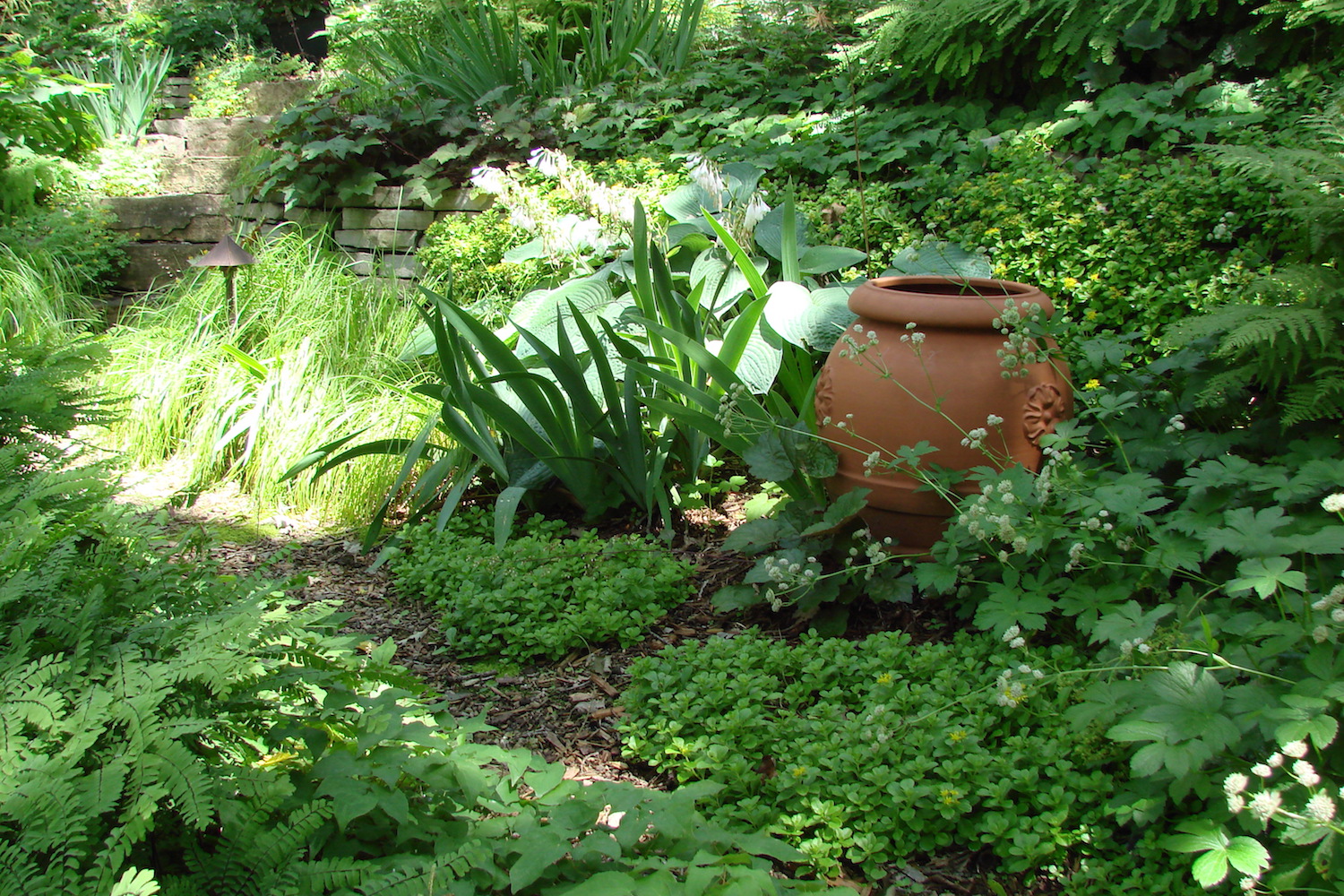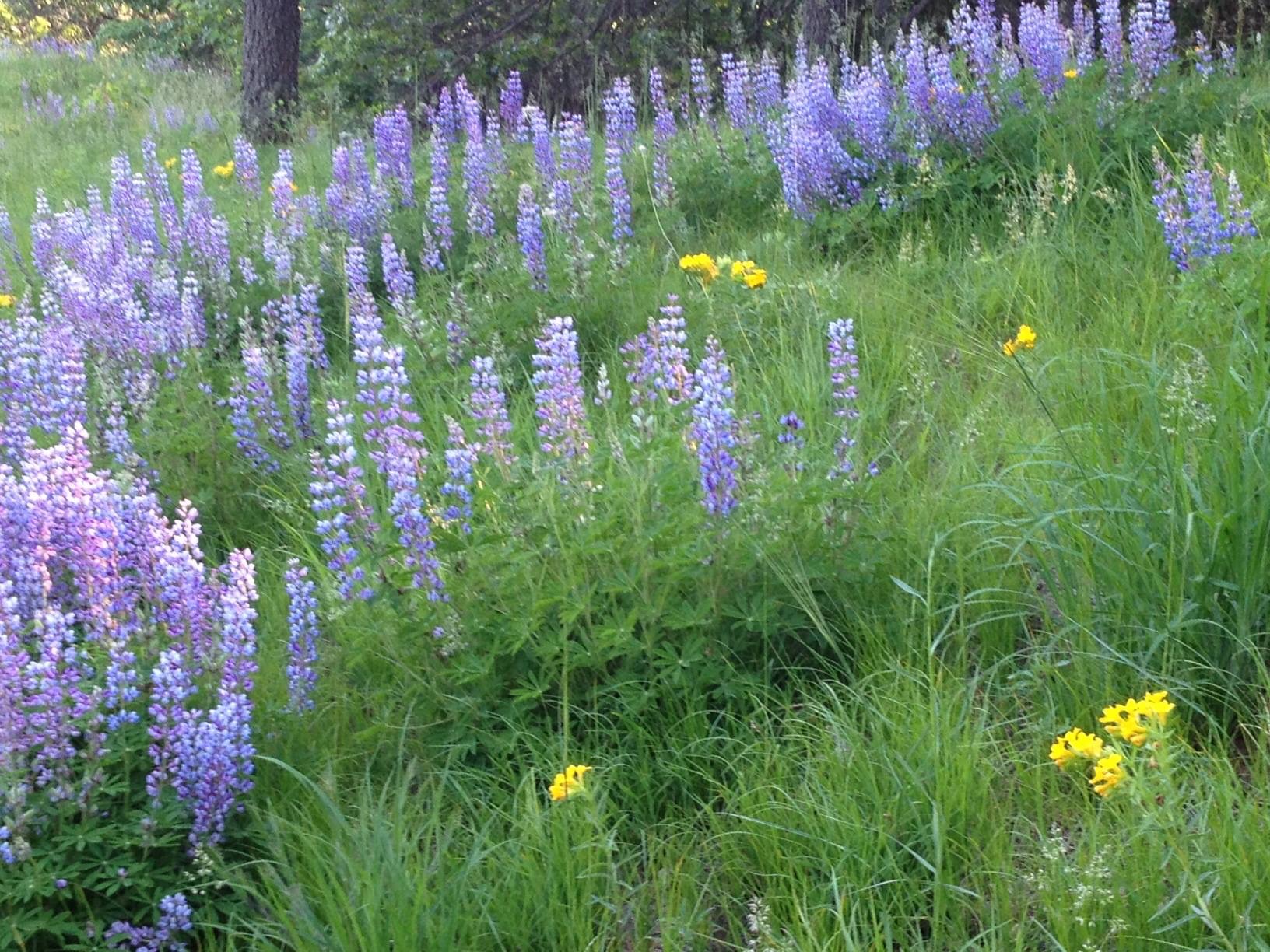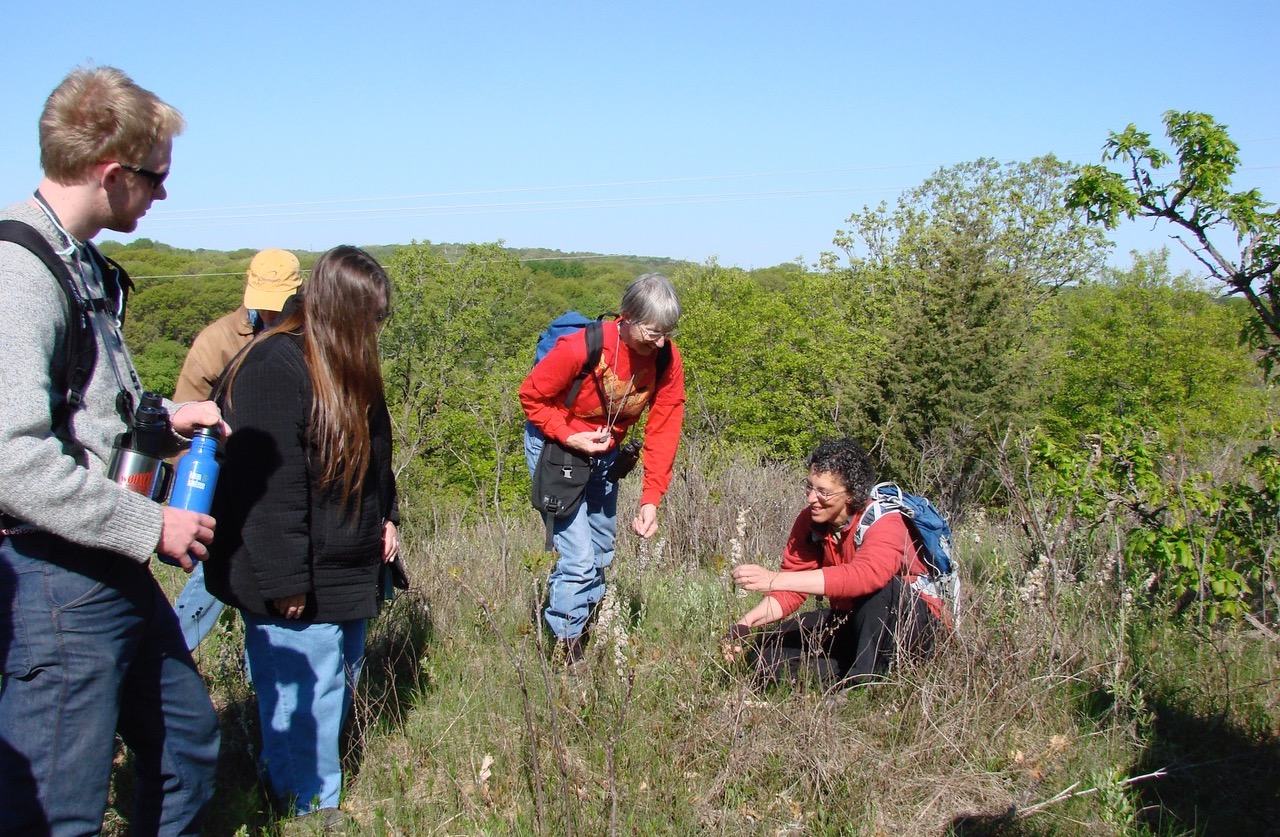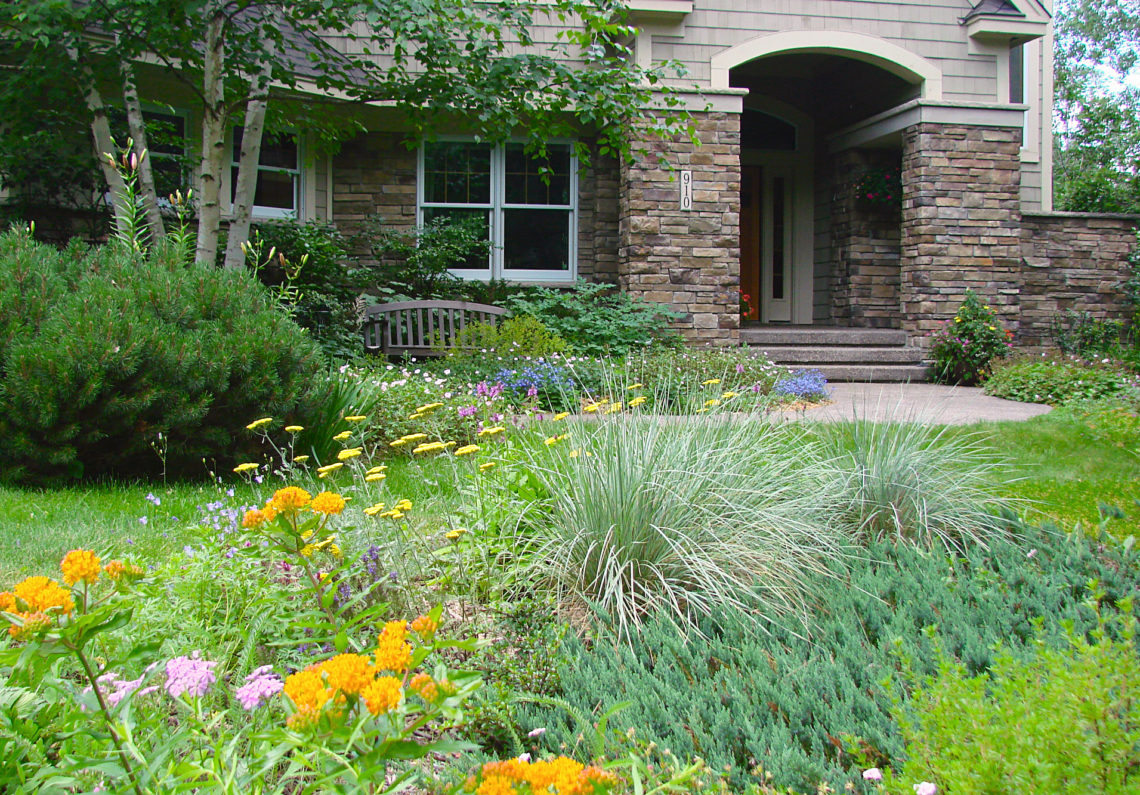Designing landscapes is enjoyable in so many ways. It becomes even more rewarding when it goes beyond creating just a pretty place, beyond a site that functions well, and becomes a really special landscape not only for people but pollinators, wildlife, and an entire web of life. Okay, so that’s really a tall order. Designing natural landscapes in an ecologically smart way keeps us humble, even for those of us who have been practicing professionally for years.
Every step towards learning and applying ecological principles in landscape design is a step in the right direction. I’m going to explain three ways of doing this that are always of great value, no matter your expertise. This is a huge topic, worthy of college degrees and lifetimes of learning, so I’ll just be touching upon several important ideas and a few valuable tidbits!
First, however, is to realize we are creating designs with a “sense of place”, by including native plants that have evolved for thousands of years along with the birds, pollinators, and all the other species found in the area.

That said, it’s not quite so straightforward in today’s changing world. Designers, land managers, and other decision makers are becoming increasingly aware of the stresses of a warming planet. The U.S. Forest Service, universities, and commercial foresters are experimenting with planting trees — and entire plant communities — they hope will tolerate more heat, drought, and wider fluctuations of weather. According to Dr. Mark Seeley, Minnesota state climatologist for over 40 years, and Professor Emeritus with the University of Minnesota Department of Soil, Water, and Climate (he wears many hats), weather is staying around longer due to the upper atmosphere moving more slowly, resulting in deeper cold, longer droughts, and larger floods (Star Tribune). It’s even more important nowadays to plant stress-prone trees where they naturally thrive (the paper birch is noted below).
In the New York Times article “Can Humans Help Trees Outrun Climate Change?” published on April 25, 2019, these issues along with some interesting experiments taking place in Minnesota, Michigan, Rhode Island, and other states (as well as in southern Canada) are discussed. There are many creative, science-based studies aimed at keeping natural landscapes healthy, despite significant and rapid changes to the climate.
For the most part, though, ecological designers still plant as much as possible with local genotype native plants, purchased from native plant nurseries. We may also include a few plants from slightly further south, say 150 miles for wind-pollinated plants.
I find the thoughtful musings of Jens Jensen (“one of America’s greatest landscape designers and conservationists”) in his book Siftings to be a very enjoyable read. On page 6, he notes “Local color, the expression of the environments dear to us and of which we are a part, must be reflected in creative landscaping and be its motive. Through generations of evolution our native landscape becomes a part of us, and out of this we may form fitting compositions…”. Siftings is a small book available in paperback, described as a “much-loved “secret” classic”, and “as informative and compelling today as it was in 1939 when it was first published.”

1. Get A Vision
To know which landscapes we personally connect with (and for professional designers, to learn what our clients love) we have to get out in nature.
There are few high-quality natural places left to use as classrooms. These “remnants” where the landscape has not been significantly altered by settlement are rare. Before settlement mainly by Europeans, Native Americans changed landscapes through practices such as burning to congregate game animals. They altered the landscape far less than did the settlers who built forts and homes, and started farming, hunting, and harvesting nearby. I suggest you head out to Minnesota’s State Scientific and Natural Areas and Wisconsin’s State Natural Areas (SNA’s) with information, maps and directions on their Department of Natural Resources websites. These are the some of our “best of the best” preserved and managed natural landscapes. Parks and wildlife preserves can also be good places to study.


While you’re hiking, stay open to all that is around you. Look broadly, peer closely, always walking mindfully taking care not to cause damage — that’s called trampling, a major no-no, especially in sensitive natural areas. Being out at various times of the year is important, especially during the growing season. Flowering can change week-to-week, and year-to-year as well. This year, pasque flower has been blooming more robustly in some dry prairies, a welcome harbinger of spring.
Sitting thoughtfully in high-quality natural areas, perhaps sketching to help your focus and memory, really works well. No need to be an artist! Photos also help us see better; they can be pretty blunt. A slightly overcast day allows us to see into shady spots. Taking time to observe naturally leads us to question why plants grow as they do. Notice the placement and patterns. Which plants are widely scattered, grow in large aggregations, or thrive in small patches? There’s a lot to see if you spend quality quiet time. (Make sure to carefully protect yourself from ticks while you do this. Some no larger than a fleck of pepper…)
Then, even though you may not know the reasons for their growing pattern or location, planting them similarly, in the right soil, sun/shade exposure, and with other plants you see them growing with will not only look more natural — There may be subtle, unknown, but important reasons for their growing patterns that you’re loosely mimicking. We need to start someplace!
A few words of caution: Large natural landscapes such as tall-grass prairie tend to have robust plants that often don’t work well in smaller, designed landscapes. Excess nitrogen from wood mulch decomposition can help promote growth so it’s not recommended for prairie. (DO use leaves for healthy, organic mulch, however!) Prairies rarely (if ever) need extra water or fertilizer once established. Adding these inputs are likely to cause many problems including promoting vigorous weeds. In smaller landscapes, it’s usually best to plant shorter, more well-behaved, dry-mesic (or dry) prairie grasses and forbs (prairie wildflowers). Some native trees and shrubs can grow far too large and spread too robustly for smaller landscapes.
It’s important to be able to ID plants during or after your hikes. The Minnesota Wildflowers website is good for finding the ID of herbaceous plants, with maps showing where they naturally grow in Minnesota and brief discussion. You can even email Katy and Peter for their help with identification. They’re donation-supported so please consider helping them keep this excellent resource funded.
My favorite native plant field guide ID book (always kept in my pack) is Wildflowers and Weeds: A Field Guide in Full Color by Booth Courtenay and James H. Zimmerman. The large photos and descriptions of the habitats you’ll find each plant growing are accurate and easy to use. It was last published in 1992, so botanical names are not current on some plants. Jim was my wetlands professor at UW-Madison, and I’ve been using his guide ever since. Various editions are available used on Amazon for a few dollars — or new for over $1,300!
Another book I usually carry is Wildflowers of Wisconsin and the Great Lakes Region: A Comprehensive Field Guide by Merel R. Black and Emmet J. Judziewicz. This book includes many more plants and they are given a ranking of 1-10 for common to rare, though the photographs are tiny and the maps are just for Wisconsin. I hope someone writes a similar guide for Minnesota. If I need to ID woody plants, I come back to my office to look at the Field Guide to Trees and Shrubs by George A. Petrides, in the Peterson Field Guide Series.
2. Learn Why Plants Grow Where They Do
Like many worthy ventures, this requires more time. Why do plants have certain growth patterns such as large aggregations, or are widely dispersed or really rare?

You’ll notice broad-spreading, rugged, prairie-grown bur oak trees on dry hilltops, especially in savannas with less than about 50% shade. But they’re also found in wet areas. WHY? Turns out that bur oak are very unique, able to tolerate both wet AND dry, but are not able to compete well with trees dominating in mid-moisture, i.e. “mesic” soil.
The book Vegetation of Wisconsin: an Ordination of Plant Communities contains a graph showing a double bell curve for bur oak prevalence in dry and wet soils. This book, first published in 1959, has an incredible amount of valuable information and is still used for reference. The UW–Madison Press published the extensive studies of professor John T. Curtis and his students after they studied native plants and how they grew in “communities” across the state. It includes a section with the effects of Native Americans on the landscape, in-depth discussions, and as well as many plant lists by community that I still find useful for lesser-known plants. It’s actually quite readable.
Oaks, by the way, are the most valuable of our native American trees, forming the base of the food web with the most species found on them — some 530 species of just moths and butterflies as well as many other insects, which, in turn, feed birds then many other species (from the outstanding book Bringing Nature Home: How Native Plants Sustain Wildlife in Our Gardens, Updated and Expanded 2009, Douglas W. Tallamy).
You’ll see that paper birch grow frequently on shady north slopes or in moist soil, with their heads in the sunshine and their roots naturally cool. They’re usually found in groves of similar aged trees after seeding into open areas. Sugar maples are one of our few native trees tolerant of deep shade, reproducing well under a canopy of mature trees. Quaking aspen and bur oak require partial to full sun. Taking time to really observe can be the beginning of deeper ecological understanding.
3. Learn About Natural Landscapes From Others
Going to presentations and attending field trips by local botanists and ecologists are excellent learning opportunities! Wild Ones: Native Plants, Natural Landscapes has local Chapters in 16 states, with 7 in Minnesota and 13 in Wisconsin where it originated near Milwaukee in 1977. The Minnesota Native Plant Society may have meetings of interest. Their field trips (for members) are especially excellent for in-depth learning. The National Audubon Society, with chapters across the U.S., host many field trips, and members may not only know birds well, but also native plants. Our native insects evolved eating these plants, supplying the vast majority of food for baby birds (also from the book by Tallamy, noted above). This is a fun website for beginning birders, just in time for the arrival of migrating warblers in Minnesota. Ah, spring!

In my next blog post, I’ll be describing a fourth excellent way to naturalize your landscape: designing with ecological concepts. Designing with ecological concepts is the real goal, and will solidly inform your natural landscape designs. To receive an update when my next article is published, join my email list (see below), and make sure to share this article with others!
“It is a wholesome and necessary thing for us to turn again to the earth and in the contemplation of her beauties to know the sense of wonder and humility.” – Rachel Carson





